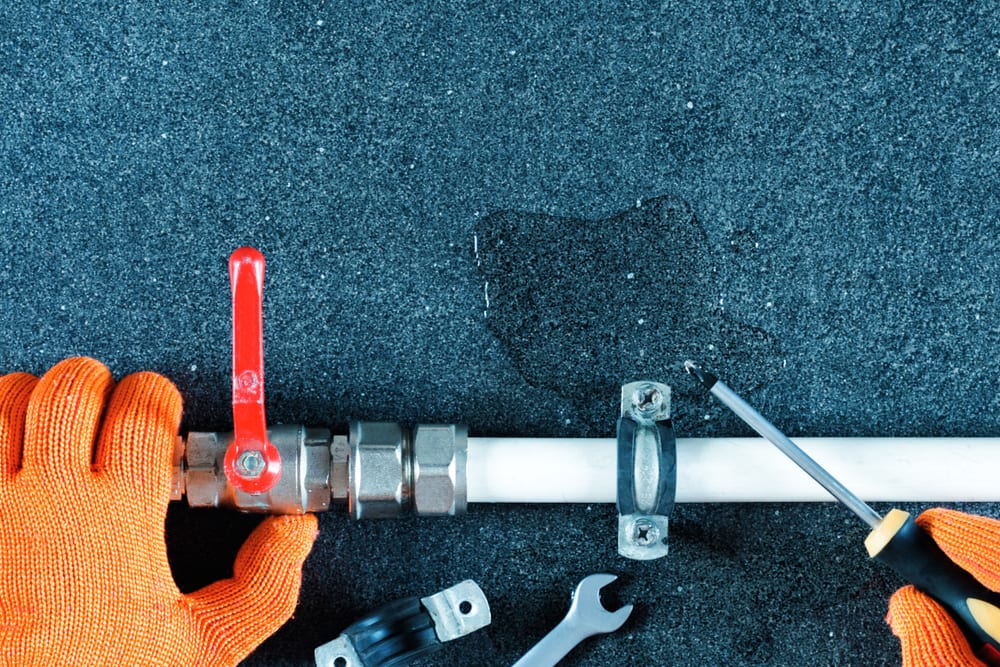What are your thoughts regarding Finding hidden leaks?

Early discovery of dripping water lines can minimize a possible calamity. Besides saving you money, it will certainly decrease the irritation and also disappointment. The minute you discover a leak, calling your plumber for repairs is the most effective option. Some little water leaks might not be noticeable. If you can not detect it with your naked eyes, below are some hacks that help.
1. Analyze the Water Meter
Every house has a water meter. Checking it is a surefire way that helps you discover leakages. For beginners, turn off all the water resources. Make certain no one will certainly flush, utilize the faucet, shower, run the washing device or dish washer. From there, go to the meter and also watch if it will transform. Because no one is using it, there must be no motions. If it moves, that shows a fast-moving leakage. Similarly, if you detect no changes, wait a hr or 2 and also inspect back once again. This means you may have a sluggish leak that could also be below ground.
2. Examine Water Intake
Examine your water expenses and track your water consumption. As the one paying it, you need to see if there are any discrepancies. If you find sudden changes, despite your consumption coinciding, it implies that you have leaks in your plumbing system. Bear in mind, your water expense should drop under the exact same array on a monthly basis. An unexpected spike in your bill shows a fast-moving leak.
A steady boost every month, also with the same behaviors, shows you have a sluggish leakage that's also gradually intensifying. Call a plumber to extensively check your property, particularly if you really feel a warm area on your flooring with piping underneath.
3. Do a Food Coloring Test
When it comes to water intake, 30% comes from toilets. If the color in some way infiltrates your dish throughout that time without flushing, there's a leakage in between the container and also dish.
4. Asses Outside Lines
Do not fail to remember to check your outdoor water lines too. Needs to water permeate out of the connection, you have a loose rubber gasket. One little leakage can squander lots of water and increase your water expense.
5. Evaluate the situation and also examine
Property owners should make it a behavior to inspect under the sink counters and also inside cupboards for any bad odor or mold and mildew development. These 2 red flags show a leak so prompt focus is needed. Doing regular evaluations, even bi-annually, can conserve you from a major trouble.
If you understand your house is currently old, maintain a careful eye on your heating systems, hoses, pipelines and so on. Check for stainings and damaging as a lot of pipes as well as devices have a life span. They will additionally normally deteriorate due to tear and put on. If you presume dripping water lines in your plumbing system, don't await it to escalate. Call an expert plumber immediately so you do not end up with a dreadful mess in your home.
Early discovery of dripping water lines can mitigate a potential catastrophe. Some small water leaks may not be visible. Inspecting it is a proven means that helps you discover leakages. One little leakage can throw away tons of water as well as increase your water costs.
If you believe dripping water lines in your plumbing system, do not wait for it to intensify.
WARNING SIGNS OF WATER LEAKAGE BEHIND THE WALL
PERSISTENT MUSTY ODORS
As water slowly drips from a leaky pipe inside the wall, flooring and sheetrock stay damp and develop an odor similar to wet cardboard. It generates a musty smell that can help you find hidden leaks.
MOLD IN UNUSUAL AREAS
Mold usually grows in wet areas like kitchens, baths and laundry rooms. If you spot the stuff on walls or baseboards in other rooms of the house, it’s a good indicator of undetected water leaks.
STAINS THAT GROW
When mold thrives around a leaky pipe, it sometimes takes hold on the inside surface of the affected wall. A growing stain on otherwise clean sheetrock is often your sign of a hidden plumbing problem.
PEELING OR BUBBLING WALLPAPER / PAINT
This clue is easy to miss in rooms that don’t get much use. When you see wallpaper separating along seams or paint bubbling or flaking off the wall, blame sheetrock that stays wet because of an undetected leak.
BUCKLED CEILINGS AND STAINED FLOORS
If ceilings or floors in bathrooms, kitchens or laundry areas develop structural problems, don’t rule out constant damp inside the walls. Wet sheetrock can affect adjacent framing, flooring and ceilings.
https://www.servicemasterbyzaba.com/blog/how-to-detect-water-leakage-in-walls/

As a person who reads about Hacks to detect leaks, I figured sharing that piece of content was sensible. Enjoyed reading our article? Please share it. Let others check it out. We value reading our article about Top leak detection hacks.